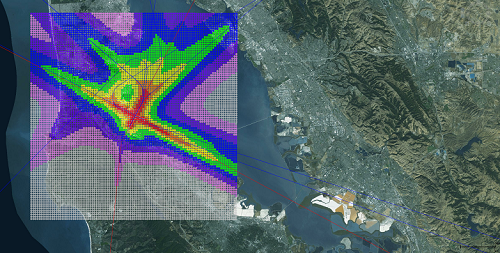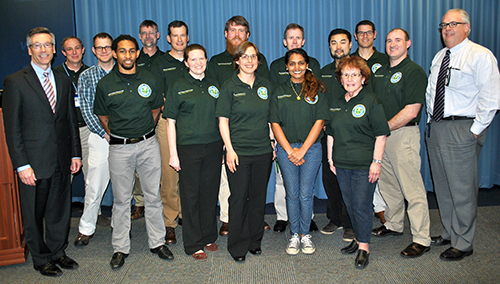Introducing a More Powerful Environmental Tool for the Aviation Community
The Aviation Environmental Design Tool (AEDT), developed by a Volpe-led team, is the Federal Aviation Administration’s (FAA) premier software for quantifying the environmental impacts of aviation, from a single flight up to full-scale global assessments.
Volpe and FAA have released a new software version, AEDT Version 2b, which was developed in lockstep with Volpe’s team of modeling experts. AEDT 2b replaces five legacy air quality and noise analysis tools and incorporates their functionalities into a single model.
Watch this video to learn more about the benefits of AEDT.
AEDT dynamically models a flight, taking into account the aircraft weight and performance characteristics and weather conditions, and calculates the resulting noise, air quality, greenhouse gas emissions, and fuel burn. This capability allows users to analyze the trade-offs between noise, fuel burn, and emissions, and quantify the environmental impact of changes in a flight's trajectory or selection of equipment.
The new capabilities of AEDT 2b, which was released in May 2015, allow users to do the following:
- Access all noise, emissions, and emissions dispersion metrics from legacy analysis tools.
- Build and edit flight tracks.
- Analyze emissions dispersion from curved flight tracks.
- Analyze emissions from the startup and taxi flight phases for airplanes and helicopters.
- Conduct airplane taxi delay and sequence modeling.
- Analyze noise from taxiing helicopters.
- Analyze emissions from auxiliary power units, ground support equipment, and a variety of other non-aircraft emissions sources.
- Model multiple airports in a single study.
- Create custom altitude controls for airplanes.

Generated by AEDT 2b, this map displays the paths of aircraft at a major U.S. airport and the resulting noise.
In concert with a suite of FAA tools that Volpe helps develop, AEDT can be used to evaluate potential health impacts from and the cost effectiveness of a wide range of policy issues, including stringencies and new standards.
AEDT 2b will be used by thousands of aviation stakeholders, and has already been used in numerous NextGen and International Civil Aviation Organization assessments that have multi-billion-dollar implications for the aviation industry.
As of July 29, the aviation community can take advantage of updates to the Environmental Protection Agency tools used within AEDT for processing emissions dispersion data. Licensed users can access the AEDT Feature Pack 1 through the AEDT downloads page.
Information about obtaining AEDT as well as documentation, FAA guidance, and user support is available on the AEDT website.

